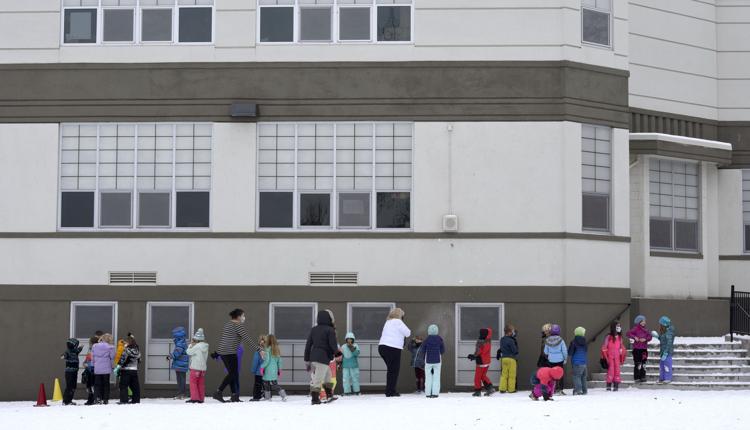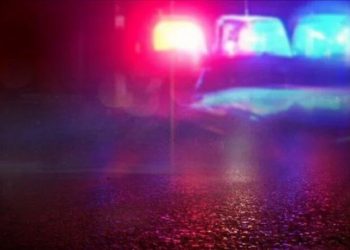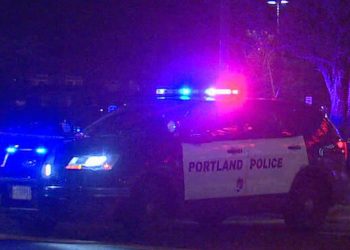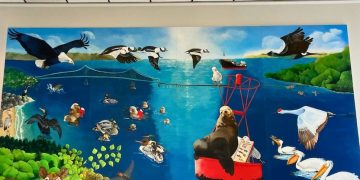BOZEMAN, Mont. – Montana State University teaching students experienced some of the same challenges and unexpected joys as experienced teachers during the COVID-19 pandemic, while still striving to learn their new profession.
Student teachers reported the ups and downs of virtual learning, unexpected quarantines, strong student bonds, and moments of wonder in their first semester teaching amid the pandemic.
“We had to model what’s happening in the local school systems,” said John Melick, MSU’s director of field placement and licensure. “We mirrored what’s happening in the real world because our students are a part of that during their student teaching experience.”
He said students, like teachers, had to be a lot more flexible, with some 100% remote, some in-person only or bouncing between the two as classrooms have had students and teachers go into quarantine.
“We run an experience that has been designed and developed for a face-to-face model,” he said. “When the shift happened, we transitioned quickly.”
MSU’s program is designed for students to be in the classroom with a licensed teacher for 15 weeks, gradually taking on more of the leadership responsibility. At the end of the time, student teachers are recommended for a Montana teacher’s license.
Melick said students were given opportunities that reflected what the districts were offering, including the opportunity to delay their student teaching semester, to work with a 100% remote teacher or in-person. He said there were a couple situations where students returned to their home state and completed their student teaching there.
Megan Pepper, who taught second grade through the Bozeman Online School, said the fall semester was a unique experience. Although Pepper said she anticipated teaching in an in-person or blended classroom, she found out it would be a fully remote class a week before the school started.
“I did not have much time to form an expectation of the rest of the semester before it began so I was able to keep positive and stay open minded,” she said.
She said the teacher she worked with treated her as a partner to create the virtual classroom setting and they tackled each challenge together while learning how to teach remotely.
“Despite the many challenges virtual teaching brings, I think it can be an effective way for students to learn if the teacher, parents and students are committed to it working,” Pepper said.
Alec Nehring, a student teacher at Belgrade High School, experienced in-person and remote learning through the district’s blended model.
He said there wasn’t a single school procedure that didn’t have to be modified for safe in-person learning but he was grateful to have the experience of teaching face-to-face.
Nehring’s classroom teacher retired during his semester in her classroom. While a new teacher was found, he said, he took over all classroom instruction.
“This event pushed me, but helped me grow as a teacher,” he said.
Melick said at the start of the semester the university wanted to ensure districts remembered their students are still students and were still learning.
“We really tried to make sure our student teachers weren’t replacing a teacher and they were still working together,” he said.
He said there was a lot of creativity and flexibility to cope with different scenarios classrooms faced. Some student teachers occasionally worked remote if they were quarantined. Some teachers were quarantined and used student teachers for in-person assistance. And some student teachers worked with substitutes while their teacher was quarantined.
Sydni Ayers was also in the blended model but at the middle school level with Chief Joseph Middle School.
She said she enjoyed the blended learning style because the smaller class sizes helped her to get to know students better and provide more one-on-one support to them.
She taught with two separate teachers who had different teaching styles. One was hands-off, and Ayers led the class regularly. In the other classroom, she was more of an extra support person.
She said Canvas, Bozeman School District’s learning management system, had a learning curve for her and her two classroom teachers. But it was similar enough to what she used at MSU she was able to be help the teachers navigate it.
Melick said he’s heard of many students being an asset to classroom teachers with their technology experience, providing “value even in uncertain times.”
A new learning management system wasn’t the only challenge.
Nehring said it was hard and sometimes overwhelming to keep the in-person, remote and quarantined students on the same pace.
“Students frequently moved in and out of our classroom, so we had to stay on top of getting students the material they needed whether they were in school that day or not,” he said.
Pepper said having students from different schools, socioeconomic statuses, technologies and home life was a challenge in the online school.
“We had to differentiate our lessons to meet all of our students individual needs,” she said. “Every day a new challenge presented itself, from Wi-Fi issues to iPads not working to students being unable to log onto a website, to Canvas not working properly.”
Like more experienced teachers, Pepper said she also was challenged with how to create meaningful relationships and set realistic goals for students with virtual learning. She said it was constantly evolving.
Relationships with parents also looked different with remote learning and included a lot more communication, she said, calling it a benefit of the new format.
“With their child being at home, the parents were able to help their child with independent work, watch their child learn and listen to their child’s teacher teach,” she said.
Despite an often challenging and unpredictable school year, the student teachers said they were inspired by their semester teaching.
Nehring said he plans to return to MSU to work on a Masters in Educational Leadership.
“Knowing that I could enjoy teaching even under such odd circumstances reassured me that I chose the right profession,” he said.
Pepper said with all of the uncertainty schools are experiencing right now, she doesn’t plan to jump into a classroom of her own. Instead, she’s planning to substitute teach in Bozeman.
Ayers said it was a very different experience from what she was expecting and what MSU was preparing them for but it made her want to be a teacher more.
“My experience just made me feel like I was on the right path and this is what I want to be doing,” she said.














